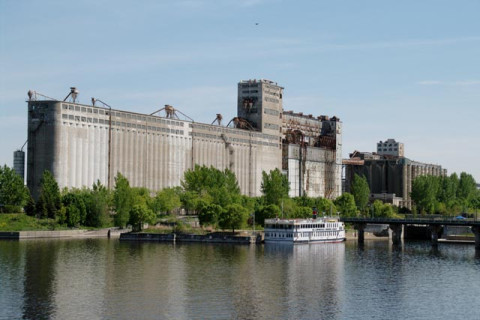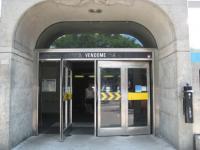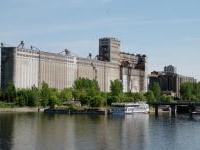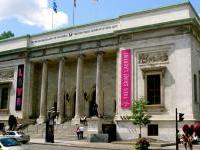
November 27, 2012.
Since early May of 2012, I participated in six Montreal walking tours: two Jane's Walks, three Héritage Montreal tours, one religious heritage tour by the Museum of Fine Arts and a Côte St. Antoine Road old farmhouse tour by the Westmount Historical Society.
The Jane's Walks, named in honor of the late Jane Jacobs, focused on the ecological and developmental aspects of urban life. Jacobs believed that a large part of modern architecture and city infrastructures were destroying our sense of neighborhood and dehumanizing urban life. Now this seems like stating the obvious, but when Jacobs first posited her ideas (1950's and 60's) these were quite radical views in opposition to so-called progress. In Montreal, some old established neighborhoods, for example, Snowdon, were essentially erased by new expressways (the Décarie) – great for cars, bad for people.
 The two walks I took were, superficially at least, quite different. The first was the south east section of Notre Dame de Grâce (NDG), starting from the Vendôme metro station on de Maisonneuve Boulevard. Here we saw a community garden on Bulmer Lane, a skateboard club and then a Canadian Legion building a few blocks west, many restored residential sites on streets that were once quite shabby – flowers, some vegetables, cats, toddlers and so on. However, this area is dominated by the new English hospital project (under construction) which may be either a benefit or not. Also, the split neighborhood syndrome was evident from the railway line and the heavy traffic roads of de Maisonneuve and Décarie.
The two walks I took were, superficially at least, quite different. The first was the south east section of Notre Dame de Grâce (NDG), starting from the Vendôme metro station on de Maisonneuve Boulevard. Here we saw a community garden on Bulmer Lane, a skateboard club and then a Canadian Legion building a few blocks west, many restored residential sites on streets that were once quite shabby – flowers, some vegetables, cats, toddlers and so on. However, this area is dominated by the new English hospital project (under construction) which may be either a benefit or not. Also, the split neighborhood syndrome was evident from the railway line and the heavy traffic roads of de Maisonneuve and Décarie.
Our young guide was very knowledgeable but unfortunately our group was “hijacked” by an older man who had a very strong personal semi-political agenda. He talked on and on about his conflicts with the local borough council and so on...some of us wandered away as this tirade (luckily) came near the end of the tour.
The next day the Jane's Walk was an entirely different location – the area around the Meadowbrook Golf Course right at the far west end of Côte St Luc Road. This is very much country in the city- lots of indigenous plants, fine old trees and plenty of birds. We could see the mushy beginnings of the St.Peter (St. Pierre) River that starts in Meadowbrook and, after an ignominious descent through the Montreal sewer system, meets the St Lawrence at Pointe au Callière...This walk wandered through a few back yards with views (of Meadowbrook) that could have been in the Eastern Townships. Although there is concern about the future of the Meadowbrook property, recent threats of expropriation and development seem to be on hold. This is a hidden treasure, but limited to golfers.
 In mid-June, Héritage Montreal offered a number of weekend walks/tours of the Silo #5 grain elevator at the Port of Montreal. Situated at the foot of McGill Street, between the Lachine Canal and the harbour, Silo # 5 looms like an ancient megalithic (it’s enormous) survivor from some Lost World. Actually this is not far from the truth as Silo #5,was erected between 1903 and 1959 in the old palmy days when Montreal was the second largest port in North America, only outdone by New York. Then Montreal was Canada’s greatest metropolis in population, wealth and industry – a title lost in the mid 1970’s. The St. Lawrence Seaway, and other various developments, led to Montreal's decline as a port.
In mid-June, Héritage Montreal offered a number of weekend walks/tours of the Silo #5 grain elevator at the Port of Montreal. Situated at the foot of McGill Street, between the Lachine Canal and the harbour, Silo # 5 looms like an ancient megalithic (it’s enormous) survivor from some Lost World. Actually this is not far from the truth as Silo #5,was erected between 1903 and 1959 in the old palmy days when Montreal was the second largest port in North America, only outdone by New York. Then Montreal was Canada’s greatest metropolis in population, wealth and industry – a title lost in the mid 1970’s. The St. Lawrence Seaway, and other various developments, led to Montreal's decline as a port.
Hard hats were handed out at the security post as we entered. This was a serious adventure at a usually closed and well guarded location. The inside of Silo # 5 is rusty, dark and a whole new version of eerie, even on a sunny afternoon. The machinery of grain storage and shipping still lingers as does the wispy wheat stalks growing outside – reminders of a busier time.
Surrounding the site we could see several more abandoned buildings that had been active once at this western end of the Port. A few showed signs of failed attempts at revitalization which is somehow even drearier. The Port area, although still fairly busy, mainly with containers, is now primarily a recreo-tourist area. The very much cleaned up Lachine Canal is a major draw with pleasure boats, a bike path, an old tug boat on display and so on.
Eight other Montreal walks were presented by Héritage Montreal later this past summer as part of their regular program. Each walk was held twice on varying weekends and every walk had both French and English speaking guides. We always met and ended at a metro station . These walks were exceptionally well organized, always on time, always interesting. I participated in two – Notre Dame de Grâce in the Monkland-NDG Avenue area and then Little Burgundy between the Georges-Vanier metro and Atwater. In both these districts, it was very evident that Montreal is a collection of urban villages with distinct characters and many diverse histories.
 The Montreal Museum of Fine Arts also offers occasional heritage tours, such as the one I took in mid September that focused on religious heritage buildings, called Religious Heritage at Risk – Is There a Place in the Future for Montreal's Past ? This tour was close to the Museum itself in the downtown area The outstandingly adaption of the .former Erskine and American Presbyterian Church into the Museum's Bourgie Concert Hall started the tour. It was fortunate that the original rather oval shape of this building, and its beautiful stained glass windows, easily lent itself to its new métier. The next site was the chapel of the Grand Séminaire de Montreal ( known to many as the “Priests' Farm”) on Sherbrooke Street. This is an impressive and very European looking venue. The entire structure is very large, and other than the school, certainly not as active as it once was. This is a most interesting historic site with the two Martello towers in front which are among the oldest buildings in Montreal. The third location we visited was the chapel of the Grey Nuns Mother House (now part of Concordia University) at the corner of Guy and René-Lévesque. This bright,airy space is much more in the Quebecois tradition, compared to the chapel at the Grand Séminaire. We also saw the nun's burial area in the crypt (basement) of the building.
The Montreal Museum of Fine Arts also offers occasional heritage tours, such as the one I took in mid September that focused on religious heritage buildings, called Religious Heritage at Risk – Is There a Place in the Future for Montreal's Past ? This tour was close to the Museum itself in the downtown area The outstandingly adaption of the .former Erskine and American Presbyterian Church into the Museum's Bourgie Concert Hall started the tour. It was fortunate that the original rather oval shape of this building, and its beautiful stained glass windows, easily lent itself to its new métier. The next site was the chapel of the Grand Séminaire de Montreal ( known to many as the “Priests' Farm”) on Sherbrooke Street. This is an impressive and very European looking venue. The entire structure is very large, and other than the school, certainly not as active as it once was. This is a most interesting historic site with the two Martello towers in front which are among the oldest buildings in Montreal. The third location we visited was the chapel of the Grey Nuns Mother House (now part of Concordia University) at the corner of Guy and René-Lévesque. This bright,airy space is much more in the Quebecois tradition, compared to the chapel at the Grand Séminaire. We also saw the nun's burial area in the crypt (basement) of the building.
The question raised by this tour is what about the future all the other now unused or underused religious buildings of all denominations ? The three we saw are exceptions – in history, location and architectural interest.
The last historical walk of the season for me was a guided tour in October of Westmount's original farms along Côte St. Antoine Road. This was organized by the Westmount Historical Association and in spite of continuous rain, was well presented. Even though many houses have disappeared over time, many still remain such as the notable Hurtubise house at the corner of Victoria and Côte St.Antoine which is one of the oldest domestic structures in Montreal.
Everyone should make the effort to participate in Montreal's many walking tours. On foot, we see so much that is missed from a vehicle. Also, the local and human aspects of our history become more evident when we take the time to really look at where we live.
Sources:
Information: Héritage Montreal - www.heritagemontreal.org
Jane's Walks – www.urbanecology.net/walks
Montreal Museum of Fine Arts – www.mmfa.qc.ca
Westmount Historical Association – www.westmounthistorical.org